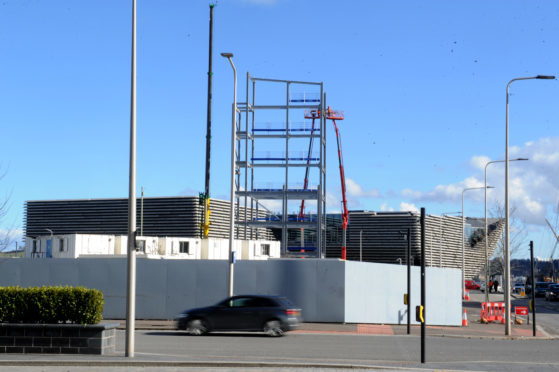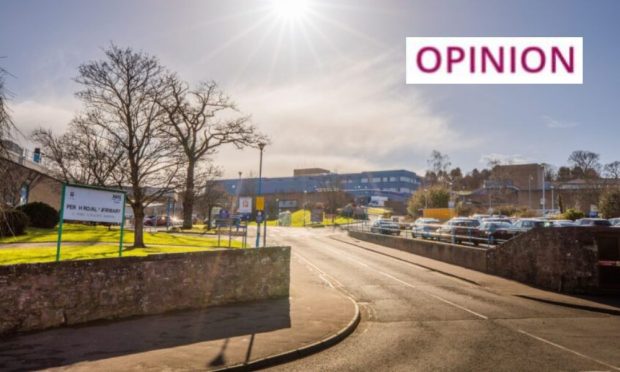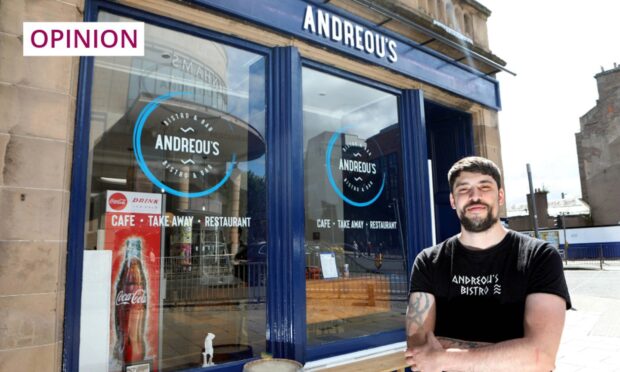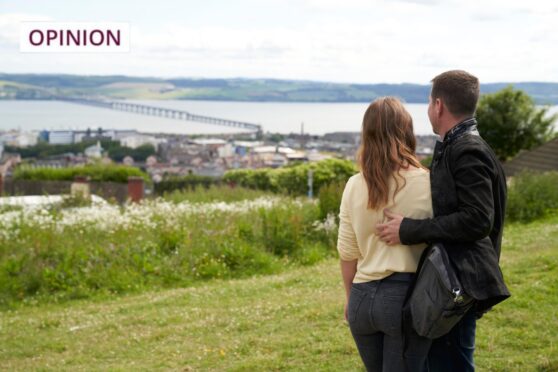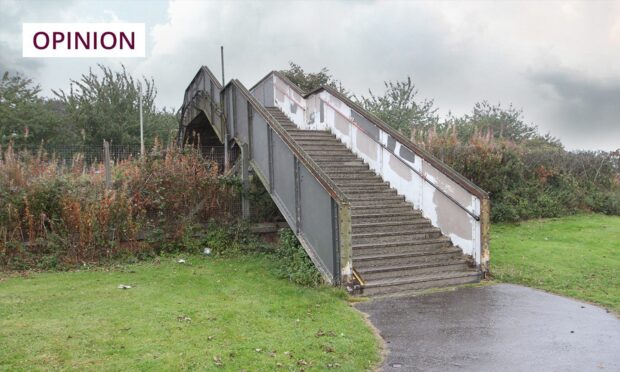Sir, – Regarding Hilda Hynd’s letter (“Opportunity lost for V&A setting”, The Courier, April 12)regarding the V&A being overshadowed and blocked from view by an office block.
There are already two petitions running on this subject.
However, Dundee City Council planners had already made up their minds even before the V&A foundations had been laid.
They asked the public which design would be their choice for the V&A but failed to tell them it would be surrounded, and all but hidden, in a chaotic gridlocked road network with taller buildings all around, blocked from view unless you are sailing on the River Tay.
Several letters on this subject have appeared in The Courer letters pages.
To the best of my knowledge, the office block is being built for Dundee City Council and has not yet found one interested party.
It is not as if we need another empty office block since we already have several, all within walking distance of the V&A.
We see hotels being built in concentration down by the river, and no word of caution in regards to the V&A not drawing sufficient crowds to fill them.
Apart from the V&A, what else is going to bring millions more visitors to Dundee?
Where will the visitors spend the millions we are being told will come to Dundee? Discovery Point? RRS Discovery itself ? In fact, what is new in Dundee apart from the V&A?
Nothing of note, so is it the V&A alone which is going to attract millions of new visitors?
Once they have looked around the V&A, where do they go next ? Golfing? Theatres? Shopping?
The Dundee waterfront and the V&A have become a debacle, an exercise in ruining what could have been a great opportunity.
A natural waterfront turned into a business zone. Gridlocked from east to west. Pollution with a sea breeze. A hotel zone with no heart, no night life and no real community.
However, it will not all be doom and gloom, vacant office blocks and empty hotels.
There will be a pretend beach. (until the north sea wind blows it away).
Arthur Gall,
14D Pitalpin Court,
Dundee.
Historic Dun|dee destroyed
Sir, – It comes as no surprise to anyone whose roots are firmly planted in “Auld Dundee”, to read Ms Hynd’s letter (April 12) voicing her regret at what is happening down by the waterfront.
Her sentiments are fully in line with my own recent contribution, which made plain just how much I objected to what I consider to have been the destruction of historical Dundee which, with just a little forethought and imagination by the planning department, would surely have been of great interest to the expected influx of visitors engendered by the much-vaunted V&A.
As Ms Hynd so clearly states we are instead witnessing the desecration – my term – of what might have been a quite unique waterfront development.
One cannot help feeling that a fundamental change in the aims and attitude of those involved in the aforementioned department is long overdue as, I believe, they display all the classic signs of a group used to being in control, rather than being only one facet of service to the community.
Ian Kennedy.
1 Gray Den,
Liff,
Dundee.
NHS patients should pay a bit
Sir, – I agree with James Macintyre (“Scotland should use the French system”, Letters, April 11) who suggests the NHS should charge a small fee for patients.
They already get free meals and treatment and do not pay for prescriptions so a charge, except for those on welfare, would be to those who can afford it.
Those with a NHS dentist have to pay a contribution so why not the rest of the NHS patients – except the drunks who should be charged £200 every time they show up at A&E.
Clark Cross.
138 Springfield Road,
Linlithgow.
Deer threat to woodland
Sir, – Bill Cowie (“What about the red deer culling?”, Letters, April 9) compares the ‘culling of hares’ with red deer management.
Hares do not, as far as I am aware, present any threat to young woodland (either amenity broadleaf or commercial conifers).
Red, fallow (where they occur) and/or roe deer on the other hand do present a constant and serious threat to most natural and many managed woodland regeneration works throughout Scotland.
Deer fencing may help in some cases, but this in turn has other implications for wildlife movements across the land.
In most cases, deer numbers can only be managed effectively by culling.
With regard to Mr Cowie’s comments on ‘shooting pregnant hinds’ my personal experience is that Scottish Natural Heritage are extremely reluctant to issue ‘out of season’ authorisations, even where extensive damage to young broadleaf woodlands is apparent.
Ian Davidson.
St Jerome’s,
Brae Street,
Dunkeld.
Pheasants and Lyme disease
Sir, – Rufus Sage of the Game and Wildlife Conservation Trust (GWCT) contradicts a colleague (“Pheasants, ticks and the science”, Letters, April 7).
Andrew Hoodless, of the GWCT has stated that: “We conclude that pheasants are reservoir competent for Lyme borreliosis spirochetes and potentially play an important role in the maintenance of B. burgdorferi s.l.”
It is far from agreed between the various global scientific bodies that pheasants are not central to the increase in the spread or Lymes and other tick-borne pathogens in the UK.
The study by the Natural Environment Research Council Institute of Virology and Environmental Microbiology, Oxford, UK concluded that, compared to rodents, pheasants are over 50% more effective at transmitting Burgdorferi to ticks.
This suggests that despite higher infection rates in wood mice, pheasants are more prolific transmitters of B. burgorferi, the pathogen responsible for Lyme disease.
Wood mice, the most prolific vector for this pathogen, become more numerous the closer one gets to feeding stations or release pens, as they are attracted by the food provided.
What makes pheasants the fundamental link in the large increase of Lyme disease is their subsequent dispersal on release.
Though the wood mice have the largest rate of infection, they are restricted in how far they travel, thus limiting the spread of infected ticks.
The tick-infested pheasants have a much larger range.
Without the hugely abnormal number of pheasants present, the infections would be localised – the biomass of pheasants released annually is around 41,000 tonnes (2010).
It is also the wood mouse which infects the mountain hare with the pathogens and, like the pheasant, spreads the infected ticks over its range.
The increased number of mountain hares is largely the responsibility of the intensive management of driven grouse moors, which make the perfect territory for them as they are largely artificially devoid of predators, except the golden eagle.
This makes both mountain hares and pheasants a fundamental part of the dispersal process required for the rapid spread of Lyme disease.
Though both these creatures are central to the spread of disease due to man’s manipulation, they are seen in very different lights.
One is seen as a dangerous pest and the other as a valuable prey species.
The real problem at the heart of this human health issue is one of irresponsible interventions by landowners, and their effect on our natural biodiversity.
George Murdoch.
4 Auchcairnie Cottages,
Laurencekirk.
